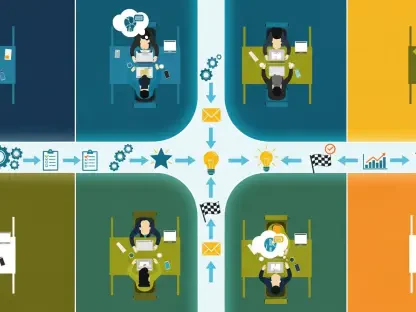In today’s fast-paced business environment, many organizations face challenges in attracting, managing, and retaining top talent due to fragmented and siloed approaches in their talent management processes. The traditional methods often lead to inefficiencies, talent shortages, skills mismatches, and a generally poor employee experience. A shift towards a unified talent strategy aims to resolve these issues by aligning employee support with business goals, ultimately attracting top talent, driving innovation, and fostering sustainable growth while ensuring a positive workplace environment.
Integrating Talent Acquisition, Management, and Employee Experience
A unified talent strategy effectively integrates three key areas: talent acquisition, talent management, and employee experience. Within talent acquisition, the focus is on sourcing, evaluating, and hiring the best candidates for specific roles. This ensures that the organization attracts individuals who not only possess the desired skills but also fit the company culture. Talent management, on the other hand, involves measuring employee performance, encouraging continuous learning and development, and helping employees achieve their professional goals. This fosters an environment of growth and readiness, preparing employees for future challenges and opportunities.
The employee experience is another cornerstone of a unified talent strategy, emphasizing the importance of creating a safe, positive, and rewarding workplace where employees feel valued and appreciated. When employees have a positive experience and feel engaged, they are more likely to be productive, loyal, and committed to the organization’s success. In essence, integrating these three areas ensures a holistic approach to talent management, addressing inefficiencies and aligning organizational goals with employee needs.
Leveraging Technology for Streamlined Operations
To effectively implement a unified talent strategy, organizations must evaluate their existing processes and technologies to identify areas for improvement. Technology plays a pivotal role in streamlining operations and creating a cohesive experience for both candidates and employees. Many companies currently use separate systems for applicant tracking, performance evaluations, and learning and development. However, these systems often lack integration, leading to disjointed processes and inconsistent employee experiences.
Adopting a unified technology platform that supports a comprehensive talent strategy can vastly improve process efficiency. Such integrated systems offer consistent user experiences, reduce the need for manual data entry, and provide comprehensive reporting across all stages of talent management, from onboarding to retirement. This integration ensures that data flows seamlessly between different processes, enabling organizations to make informed decisions based on comprehensive insights. The result is a more streamlined, efficient, and effective talent management process that aligns with broader business objectives.
Measuring Success and Fostering Innovation
To measure the success of a unified talent strategy, organizations must establish clear metrics and benchmarks that align with their business goals. Regularly assessing these metrics helps in identifying areas of improvement and ensuring that the implemented strategies are effective. Additionally, fostering a culture of continuous improvement and innovation is crucial for staying competitive. Encouraging employees to share their ideas and feedback can lead to the development of new processes and solutions that further enhance the talent strategy.
By integrating various facets of talent management into a cohesive approach, organizations can optimize their workforce, enhance employee satisfaction, and create a more dynamic and resilient workplace. This is essential in maintaining a competitive edge in today’s challenging market.









